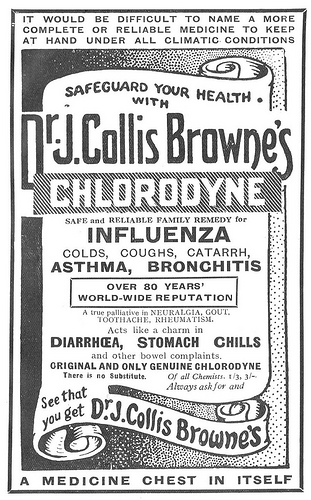The Marketer’s Dilemma
Times have changed, and the rise of the internet and interconnectivity of the World Wide Web has played a huge part in that change. The marketer’s dilemma is to adapt to the changing world environment–that is, the rise of social media as an advertising platform.
What’s Different About Social Media?
Some companies have been resisting addition of social media for marketing, but change is inexorable, and it is better to get ahead on the emergent paradigm than to rest on laurels–trust me, I’m a print designer. I know all about letting change and technology progressing and turning a blind eye until suddenly, the market has changed. It’s not pretty. “It’s easier to keep up than catch up” the old adage goes, and all of the old marketing dogs are busy learning new tricks to keep up with the business.
The tables have turned–with the rise of Social Media and peer-to-peer (many-to-many) sharing of information, opinions, ideas, and experience, a large portion of the internet-connected population have now become self-empowered. Old sales ideas (one-to-many broadcast) just don’t work anymore. People don’t want to be bludgeoned over the head with sales pitches every time they interact socially online.
How Intrusive Marketing Soured People to Aggressive Advertising
There has been an extreme push-back against aggressive online marketing, especially since the advent of SPAM emails flooding people’s inboxes, intrusive, of little to no value (entertainment or information), and possibly shutting down servers, filling email inboxes (which had smaller limits in the early days), interrupting service, through server overload. People like to think they have some control over what comes into their inbox (after all, in the early to mid 90s, often they were paying for bandwidth, and hence paying for everything that came into their inbox). It’s not the same as turning on the TV and taking the ads along with the programming (the advertising on TV, as well, has increased exponentially). Spam emails, as well as obnoxious ad pop-ups, interrupted work flow, and really woke most people up to the fact that, hey, this is not okay, and wow, advertising is getting to be really annoying, especially when it’s constantly in one’s face.

If it’s that annoying and intrusive, who is really going to want to buy the product? The best marketing is simply to provide good value, something useful, interesting, necessary–give people a compelling reason to visit your site, your store, buy your product–without being overbearing about it. This aversion and overload caused a bit of push-back to even traditional advertising, causing advertisers to inject more interest & entertainment into their commercials, into their ad campaigns. (Think: Super Bowl commercials)
New Marketing: Transparent & Honest
Not only does marketing have to be interesting, it needs transparency and honesty, too. Consumers are a lot more empowered and educated, as stated above, and have now lost their tolerance for being manipulated. There are a multitude of consumer watchdog groups, and there are more and more online resources available for people to do their own research. The days of people being spoon-fed information that they take at face value are over. Increasingly, one of the biggest red flags for people are studies about a product that are paid for by the industry selling the product. “Follow the Money” is a good way to gauge whether there is a conflict of interest involved, or if someone posing as a customer is actually a paid marketer/actor. When people find out they’ve been duped, and the company doesn’t admit it until forced to, it back-fires.
 The same thing about intrusive advertising applies to deceptive advertising–if you have to lie to sell your product, then why should people buy it? Take Monsanto, for example. Putting aside for the moment even the numerous allegations that they tweak study results to reflect well on GMOs and sue small farmers for their seeds migrating into their fields and sprouting, isn’t it enough that Monsanto pours millions of dollars into initiatives aimed at keeping GMOs from being labeled? If they don’t have the transparency to let people even know GMOs are in products, then what does that show about GMOs? That’s one reason there’s been a huge push-back against Monsanto. They essentially have to trick people into eating their product.
The same thing about intrusive advertising applies to deceptive advertising–if you have to lie to sell your product, then why should people buy it? Take Monsanto, for example. Putting aside for the moment even the numerous allegations that they tweak study results to reflect well on GMOs and sue small farmers for their seeds migrating into their fields and sprouting, isn’t it enough that Monsanto pours millions of dollars into initiatives aimed at keeping GMOs from being labeled? If they don’t have the transparency to let people even know GMOs are in products, then what does that show about GMOs? That’s one reason there’s been a huge push-back against Monsanto. They essentially have to trick people into eating their product.
Advantages of Social Media Marketing
Okay, so we’ve talked about some of the challenges and issues with marketing in an informed-consumer world, let’s talk about some of the advantages.
Big Data Makes Advertising Even More Tailored
In the old days of TV advertising, or even radio, ads were geared towards a target demographic of people most thought to watch the shows (such as laundry soap commercials aimed at bored housewives watching “Soap Operas” during the day). With the emergent “Big Data” phenomenon, and computing power, and people browsing on personal computers, phones and tablets, advertising can be tailored specifically based on what people have “liked” in the past, what they’ve bought in the past, or even looked at in the past. Amazon uses this a lot to send out targeted emails to users at least once a week, if not more, and yes, even while that’s annoying, at least Amazon makes more intelligent guesses at what someone purchasing one item will want to accompany that item–based on other people buying the same thing, and then also buying other things to go with it (such as a cookbook for dried food with the purchase of a food dehydrator, for instance).
A little annoying, and for some, creepy (that nothing seems to be private any more–in fact, the technology of advertising in Minority Report is starting to be implemented now), but, at the same time, potentially useful, making buying much easier online–and that, of course, is one goal of online marketing, to make the experience as smooth and seamless as possible. So now, with targeted ads based on past preferences (and analogous preferences of friends or people who have made similar purchases), at least the advertising is more relevant.
With Peer-to-Peer Marketing, Sources are Trusted
The thing is, with someone endorsing something they’ve tried, their friends are more likely to try it too, because (unless their friend is a paid marketer for a company) it’s a disinterested source, not out for gain, and hey, they have things in common, so maybe that would be a good fit, who knows? “Word of mouth” is an age-old idea, actually. Remember the Clairol commercial from the 70s that went, “And they told two friends, and they told two friends” with the exponentially-growing number of photographs of women? So imagine that, with a global conversation going on. It’s mind-boggling. There really is a lot of potential.
It’s a Truly Global Community, Which Opens the Market Worldwide
I have friends on Facebook in other countries. I did meet them in real life (traveling through Europe, years ago), but it’s nice to be able to keep up with them, miles and years away. That’s what a social media platform does–it helps people to connect, no matter what the distance, as long as there’s internet. “Reach out and touch someone” (another ad slogan–recognize it?) is more true today than ever. I’m starting to question whether it’s even as high as six degrees of separation connecting everyone on the planet. It’s a small world.
One aspect of having a global community interacting is the rise of Open Source. Open Source software is free, is collaborated on by people around the world for the joy of improving an idea, a product, that is not out there for profit. There are Open Source solutions for a lot of paid software nowadays. Gimp is getting to be a very popular alternative to Photoshop for people who just want to edit photos for fun (it’s harder to take those photos to print–but they can easily be used online). I mention this because Open Source is the wave of the future–a model that does not depend on financial gain, (at least initially) but rather, the love of designing a solution for its own sake. I say, “initially,” because once an Open Source idea catches on, say, like WordPress, for instance, the blogging engine supporting this blog, then marketing opportunities get created for peripheral functionality (ie plugins) and in some cases documentation and support–there are a lot of web designers now making a healthy living designing WordPress sites. And that’s just one example. The point is, with Open Source, there are new potential markets opening up all the time, all over the world–the trick is knowing what people need, what will help people, and that is the idea/product that will catch on.
Speaking of catching on, there’s also the new phenomenon today called “Going Viral”–a marketer’s wet dream (unless, of course, it’s bad publicity…). Justin Bieber “made it” by having his videos go viral and hence he was discovered. It’s an interesting phenomenon to observe, however, and I wonder if there’ll be backlash agains it in the future. Memes were going viral for a while–it’s like a fad, but with worldwide and incredibly fast consequences.
Marketing Just Got a Bit Less Expensive
So, while advertising still costs money, even on social media networks, interacting with people one-on-one is free. They do, however, take manpower, and keeping on top of things, as well as savvy to have interactions go well. But for this reason, a lot of big companies will do a lot of customer service through Social Media. It is enormously effective, if a company responds in a timely manner. I have been pleasantly-surprised at first to complain on a business Facebook page to have an answer within a couple of hours. Now, however, I start to expect it–so customer expectations are raised, but damage control without phone expense is really valuable. Because one good customer service scenario can win a customer back, and get them to talk about you to their friends. Failure to respond, on the other hand, can be fatal.
Conclusion
 In closing, I would offer a couple of points. First of all, learn from your mistakes. This is still an experimental field, changing rapidly day by day with emerging new technologies. While some may claim to be (and may actually be) experts in the field, the social media scene is a moving target, with memes that come and go. Have fun with it!
In closing, I would offer a couple of points. First of all, learn from your mistakes. This is still an experimental field, changing rapidly day by day with emerging new technologies. While some may claim to be (and may actually be) experts in the field, the social media scene is a moving target, with memes that come and go. Have fun with it!
Secondly, provide value through a stream of content and creativity–entertainment value, educational value–make it worth people’s while to visit your social media sites. Give people something to talk about–start the conversation, and step back and let the brainstorming begin. This allows people to participate, which always encourages interaction. Participation is not limited–anyone with access to the internet (and the site is not blocked by the government) can interact, anywhere in the world.
For inspiration, I offer the story of Weird Al’s recent media launch of his new album, Mandatory Fun. Teaming up with Truscribe Whiteboard Videos, College Humor, and possibly some others, released, over the period of one week, one superbly-clever video a day during his initial album release, with a special price of $6.99 during the week release (I’m sorry I didn’t take advantage of it then!). Each video is really well done, with a completely different style for each, and each is so clever, so entertaining, that I had to watch several of them repeatedly (in awe of some of the animation in Word Crimes), until the songs got stuck in my head. Ooops. And then I was sold. To have a song go through your head…well…that’s how old ad jingles got so popular in the first place. But the campaign certainly worked–Weird Al’s album debuted at the Number One spot on Billboard’s Top 200–the first time a comedy album has EVER debuted at Number One, and the last time a comedy album even hit Billboard’s Top 200 was in 1963, the year Kennedy was shot (Al Sherman’s album My Sun, the Nut). I present, therefore, Weird Al’s Mission Statement. Enjoy.
[youtube https://www.youtube.com/watch?v=GyV_UG60dD4?rel=0]
Resources
Evans, Dave D. “Chapters 1 & 2.” Social Media Marketing an Hour a Day 2nd Edition. 2nd ed. Indianapolis, IN: Wiley, 2012. Print.
Lovett, John N. “Going Pro With Social Media.” Social Media Metrics Secrets Do What You Never Thought Possible with Social Media Metrics. Indianapolis, Ind.: Wiley Pub., 2011. Print.







